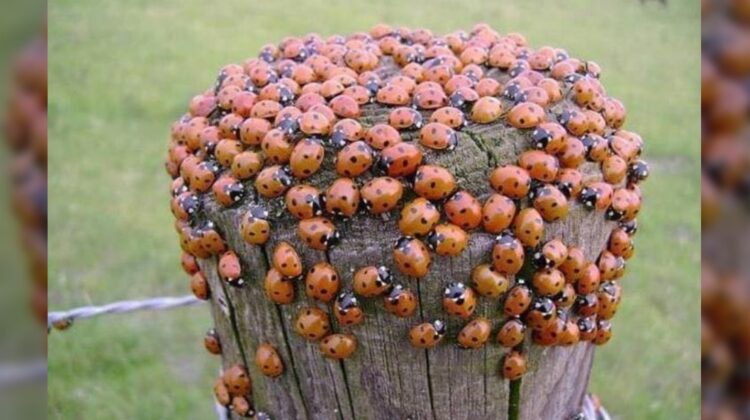
Did you know that a fluttering swarm of ladybugs isn’t just a delightful sight, it’s also called a “loveliness”? With a name so charming, it’s no wonder these tiny beetles have captured our hearts and imaginations for centuries. In many cultures, ladybugs, often called ladybirds, are seen as symbols of good luck and fortune. So, the next time you spot one, take it as a gentle reminder to appreciate the little blessings in life.
But the ladybug’s appeal goes beyond mere superstition. These beneficial insects are nature’s tiny superheroes, gobbling up harmful aphids and other garden pests. Their presence is a welcome sign for farmers and gardeners alike, protecting crops and promoting healthy ecosystems.

Adding to their allure, ladybugs come in a vibrant array of colors, from classic red with black spots to orange, yellow, and even cream. Their delicate bodies and playful movements make them irresistible to children and adults alike. Perhaps it’s this combination of beauty, benefit, and whimsy that has woven ladybugs into our folklore and traditions.

In many European countries, spotting a ladybug is said to bring good luck, particularly in love and finances. In Japan, they represent joy and prosperity, while in China, they symbolize harmony and new beginnings. Even their scientific name, Coccinellidae, translates to “little scarlet ones,” adding to their inherent cuteness.
So, the next time you encounter a ladybug, remember: it’s more than just a pretty bug. It’s a symbol of good fortune, a guardian of gardens, and a delightful reminder to cherish the small wonders that life has to offer. Spread the love (and a little ladybug knowledge) by sharing this “loveliness” with your friends and family. After all, a little dose of ladybug magic can brighten anyone’s day!

Leave a Reply